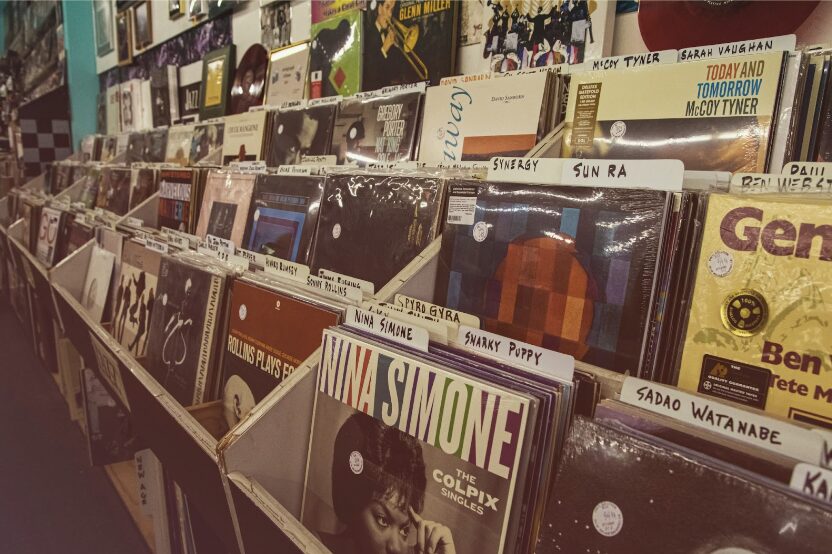In a world where almost any song ever made can be easily accessed for a small fee on apps like Spotify, Apple Music and YouTube Music, physical media should be all but dead. It is significantly more costly per album and takes up space in real world dorms. Yet, physical music media in the form of cassettes, CDs and vinyl refuses to be written off as obsolete.
According to Statista, vinyl album sales in the United States increased for their 18th consecutive year in 2024. As for CDs, the Recording Industry Association of America reports that in the first half of 2024, CDs outsold digital downloads by almost three times. This is not just older people refusing to get with the times – SNEP finds that 43% of CD purchasers were under the age of 35. It is not uncommon for popular contemporary artists to drop an album and subsequently advertise physical media on their websites and social media profiles. Although the music can be listened to practically for free on apps, these sales continue to get clicks and purchases by not just the snootiest of music listeners, but also by the casual Gen Z listener.
Now, this does not mean CDs, vinyl, cassettes and other physical music media is where they were in their glory days, where the only option to listen to your favorite artist was to purchase one of these choices. In fact, Statista found only 50% of vinyl record purchasers actually own a record player; many of these physical media purchases are more of a collector’s item rather than a go-to way to play music. But why exactly is it that the physical media industry continues to grow, in spite of all those decrying it as obsolete, outdated or expensive?
Luke Baker, a Junior at Eastern, is a collector of CDs. Last year, you could spot him walking around campus with a Walkman attached to his belt and wire headphones in his ears, attracting stares, questions, and the occasional admiring or bewildered glance of a professor who spent their college years doing precisely the same thing. A Walkman, for anyone born after 2000, is a device which allows you to take cassettes or CDs on the go and plays the music into headphones for portable music listening.
Baker originally started with a record collection but switched to CDs at the beginning of his college years. “I realize[d] how expensive it was when you weren’t working all the time. CDs were a slightly cheaper option and I’m less afraid of breaking them,” Baker said.
He is interested in physical music media for a myriad of reasons. One of them being that streaming platforms notoriously pay artists terribly. “It’s a better way to support the artists. It’s a better way to support your local music scene. It’s a better thing to own it rather than you know, they can just take [the music] off whenever and then you’re screwed, or they can kick you off your plan and you can lose all that. But you can’t lose a CD because of anything other than your own bad,” Baker said.
In Baker’s eyes, the lack of ownership is a major reason why Gen Z is bringing back physical media. “I think Gen Z feels a lot of disfranchisement. A lot of people think that they’ve gotten the raw end of the deal. You might never own anything. The housing market is difficult, and it looks like more and more people are renting. There’s a lot of anxiety around that, and I know that part of it for me is that I get to own something that is mine and they can’t take it away from me,” said Baker.
Other reasons people purchase physical media might not be so pointedly a statement. “I think almost equally it’s cool and aesthetic. It’s vintage – and people really dig that. It’s a great way to signify your allegiance to a band or a group,” Baker mentioned.
Whether physical media music is a trend or a counterreaction to the subscription model and digitization of everything remains to be seen – but as Baker points out, the simple act of purchasing a CD, cassette, or vinyl in 2025 could be interpreted as an act of resistance to the status quo.

